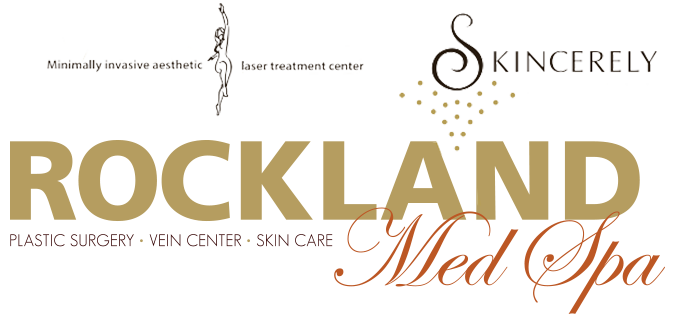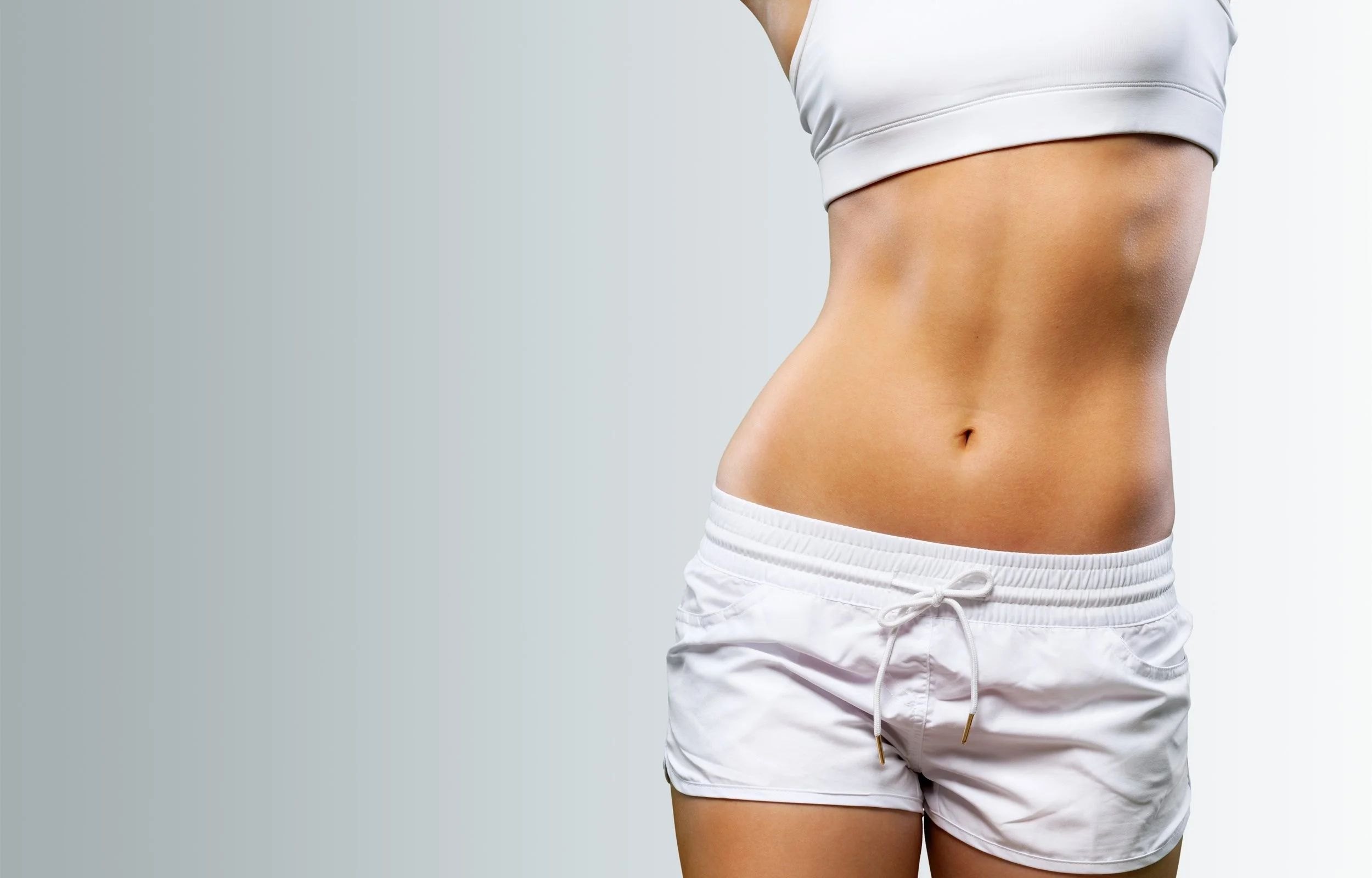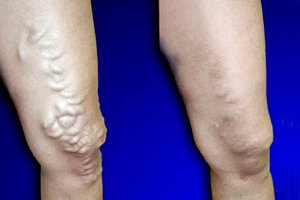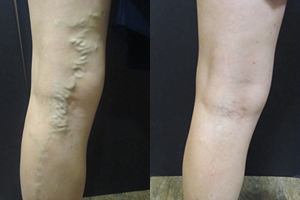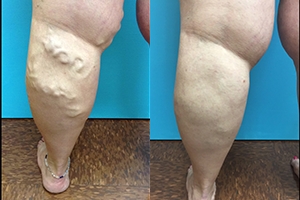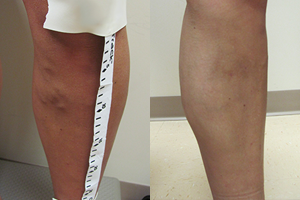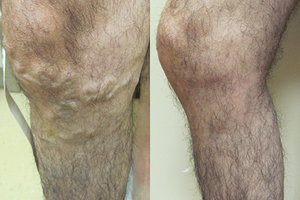What Are Varicose Veins?
Varicose veins are the large, “rope-like” veins that are often a quarter-inch in diameter. They can occur when veins do not properly return blood from the lower leg to the heart. When the valves inside the legs fail to work properly, blood leaks through and flows down the leg in the wrong direction, away from the heart. The blood overfills and distends the superficial veins under the skin, resulting in the bulging seen in varicose veins.
When varicose veins become severe, as in the photo on the right, the condition is referred to as chronic venous insufficiency. The photo to the right is the same leg after vascular laser therapy.
The most common cause of vein disease is heredity. Pregnancy, especially multiple pregnancies, is a contributing cause of vein disease. Other factors include age, obesity and jobs that require long periods of standing.
Varicose Vein Symptoms
Symptoms of chronic venous insufficiency include aching pain, swelling, easy leg fatique, leg heaviness, night cramps, discoloration of the skin, tired legs with prolonged standing and protruding veins.
Varicose veins generally continue to grow in size over time and can result in substantial pain and complications if not treated. Chronic venous insufficiency can cause ulcerations which can be very difficult to treat.
New Treatments
Historically, the only treatment for large varicose vein was to surgically remove or “strip” the vein from the body. Surgical stripping is done in an operating room under anesthesia and requires a considerable recovery period for the patient. More recently, varicose veins are treated through the use of laser therapy and/or a modified version of stripping known as ambulatory phlebectomy.
Vascular Laser Therapy
Vascular Laser Therapy is a minimally-invasive procedure that can be performed in the office in less than one hour.
In this procedure, a thin laser fiber is inserted into the diseased vein. The physician delivers laser energy through the fiber, causing the vein to close. The loss of the diseased vein is not a problem for the circulatory system, since blood simply flows through other healthy veins after the procedure.
Although individual responses vary, most people report feeling little or no pain after Vascular Laser Therapy. Often, the only sensation that is felt is during the delivery of anesthetic to the leg. Patients are encouraged to walk immediately following the procedure. As with any medical treatment, there are certain risks, which your doctor will explain, as they may apply to your individual circumstances.
Are there other options? Yes. Every patient is different and you should consult one of our physicians to determine your best course of treatment.
Phlebectomy
Ambulatory phlebectomy is a minimally invasive procedure in which a large surface varicose vein is removed through a series of miniature incisions that need no stitches.
Compared to traditional vein stripping, this technique has virtually no scarring or side effects. It is performed in the office. A local anesthetic is used and patients have very little “down time.”
After the vein is removed, the leg is wrapped with an ace bandage and the patient can get up and walk around the office prior to going home. The patient is asked to keep the leg elevated and stay off the leg for the first day. Although strenuous activity should be limited for two weeks, patients can go back to work and normal activity after 24 hours. A support stocking is worn for two weeks after surgery to minimize swelling and allow for proper healing.
A consultation with your doctor is recommended to determine which treatment is the right one for your legs and medical circumstances.
Actual Results May Vary.
Contact Information
Palisades Professional Center
2 Medical Park Drive Suite 4
West Nyack, NY 10994
Get Directions
845.358.8878 (Rockland Med Spa)
845.639.7546 (Skincerely)
info@rocklandmedspa.com
